Born in Brooklyn to an immigrant Jewish family, Bernie Glassman began his Zen studies with Taizan Maezumi Roshi in 1967 while pursuing a career in the aerospace industry. After receiving dharma transmission, Glassman established the Zen Community of New York in 1980 and later the Greyston Mandala in Yonkers, New York, which provides social services to local residents.
Glassman and his wife, Roshi Sandra Jishu Holmes (1941-1998), co-founded the Zen Peacemaker Order in 1996, and later the Peacemaker Community, an international, interfaith network integrating spirituality with peacemaking. Glassman is noted for organizing “plunges” such as retreats that immerse participants into the street life of the homeless, and the annual bearing witness retreat at Auschwitz-Birkenau. In 2000, he disrobed as a priest to put emphasis on Zen lay practice.
Glassman is the author of Bearing Witness: A Zen Master’s Lessons in Making Peace (Random House, 1999), and the forthcoming The Infinite Circle (Shambhala, Spring 2002). Bernie Glassman lives in Santa Barbara with his wife, Eve Marko. He was interviewed at his home in June by Tricycle’s Editor-in-Chief, James Shaheen.
You’re training as a clown, now, is that right? Yes, I’m training as a clown. I have a clown mentor. We’ve formed an order of clowns—The Order of Dis-Order. But “clown” is not quite the right word. In German there’s a better word, Narr, or jester, as in court jester. Of course, we have the contrarians, and the coyote in the Native American tradition—the trickster. That’s the kind of training I’m doing.
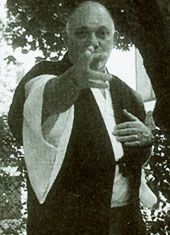
How did you end up doing this? A number of years ago, I entered a new phase. I have eighteen dharma successors, and they’re all running centers and doing very useful things. And I’ve developed many projects and founded several organizations over the years, and they’re functioning well. I wanted in the latter part of my life to be able to come up unexpectedly and make sure people aren’t taking themselves too seriously or becoming sanctimonious, that they really understand the notion of letting go. I’m learning how to do that through clowning. What I’m doing has got to do with not coming on too heavy.
Is clowning another form of teaching? Yes. In the Native American traditions the clown, or trickster, holds one of the highest positions. They have to be pretty well-trained, and they are allowed to make fun of the priests openly. After all, it’s easy to fall into the trap of just preaching and not looking so much at your own actions. So the clown watches for us, and points out contradiction and hypocrisy with humor when no one else dares. But more important, the clown, the trickster, understands the oneness of life. It’s the clown’s job to deal with those things and people that we push away—the homeless, those in prison, those we’ve pushed to the margins of society, or even just those we disagree with. The clown wakes us up to the fact that they are all a part of us, however narrowly we’ve defined our lives.
So what’s it like playing the clown? It’s fascinating. When I clown I wear a red nose. I have a minimum of clown attire. The training I’m doing is not so makeup- or dress-oriented; you create your identity from within. But I do use a nose most of the time. When someone’s wearing a nose, people can listen to that person without offense. What I’ve found is that if I can visualize the nose on someone else, then no matter what they say I can take it a different way. Visualize a nose on George Bush and listen to him talk and you’ll find that you react very differently. I’ve taken some people’s words that I completely disagree with, but put a nose on them, yeah, I still disagree with what they’re saying, but it’s not so terrible. [laughs]
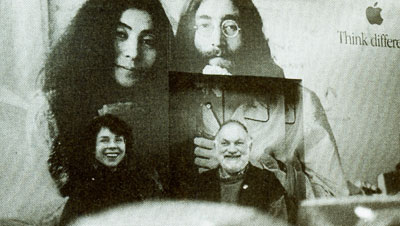
Is putting on the nose liberating? Does it give you a more flexible identity? Well, for me, yes, and for most people who do it. There’s an interesting thing that happened last year at the end of our street retreat in New York. We were walking up Fifth Avenue. It was warm when we started out from the Bowery, but it had cooled down by the time we reached St. Patrick’s in the late afternoon. On these retreats I allow no change of clothes, but you can have many layers. So there was this fellow—he was studying up at Pema Chödrön’s abbey in Nova Scotia [Gampo Abbey]—and he was cold and wanted to put on his long johns. He put his nose on—he had been inducted into the Order of Dis-Order—and somebody held a coat around him and he changed. Well, there we were on Fifth Avenue in front of St. Patrick’s, but he had his nose on so it was perfectly okay. Put the nose on and everything’s perfectly okay; in fact, there’s nothing you can do that is wrong. It’s just what you’re doing, and you can laugh at it or you can take it however you want.
Were a lot of your students’ expectations upset when you began clowning? I’ve always been changing things. And there have always been students who have come with an expectation of what a Zen teacher is. If you depart from their expectations, they get angry. Then there’s the group that came because I was what they wanted, but then I shifted. And they were angry because I didn’t remain what they wanted. And then there are students —and I would say they are in the majority—who have taken me for what I am, and part of what I am is this constant shifting. That’s the group that’s been with me the longest and it’s the group that saw me move into the clown world. Students who come now have read about me and they don’t know what to expect except that that’s part of what to expect—not knowing what to expect.
So dashing expectations is part of your job? Well, I think so. That’s the name of the game, not to have expectations. And that’s what we all have, expectations, either about ourselves or about teachers or about anything at all.
How does all this relate to your Zen Peacemaker Order work? Clowning takes our work further. The clown works in the cracks of society. He works to include those we’ve overlooked, society’s undesirables, those who make us uncomfortable. And clowning’s got all the same tenets as our Zen Peacemaker Order.
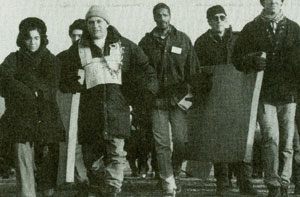
Which are? I wrote an article recently for a Japanese Soto sect that put together a book on the thirteenth-century Zen master Dogen. I started with what I think are three major principles in Dogen’s writings, and the tenets of the Zen Peacemaker Order mirror these. The first is nonthinking, and I relate non-thinking to our first tenet, “not knowing.” Not knowing is the same place a koan is meant to bring you to. A second important principle is shikantaza—“just sitting.” My translation of shikantaza is “bearing witness.” And for me, bearing witness is the state of total nonduality. Robert Heinlein, the science fiction writer, uses the word “grokking,” meaning “becoming the experience.” Bearing witness, shikantaza, and grokking are all the same thing for me. The third principle is butsudo, the way of the enlightened one. For me, that’s healing oneself and others through loving actions.
So the unusual conditions that you create—whether it’s a street retreat or sitting at Auschwitz—are designed to put people in a situation in which they’re going to be up against the first tenet, the state of not knowing? Exactly, and for me these retreats are experiential koans. The strongest koan is something that happens in your life. What I now call “plunges”—the street retreats, sitting at Auschwitz, Zen Peacemaker Order work—have been more transformative than formal koan work has.
How so? Working on a koan is a plunge; going to a sesshin is a plunge. But after many times you can get conditioned, and a sesshin can become like a vacation, or at least something you’re used to, not necessarily a plunge anymore. A life plunge is a very effective way of taking you out of that space of knowing and dropping you into a place of not knowing.
After a plunge into the unknown—say, a retreat at Auschwitz—how does “bearing witness” come about? It’s mainly that you are exposed to many different voices around many different issues. By bringing together survivors, or the children of survivors, and children of SS officers, gypsies, gays, people of many backgrounds, you hear all of the voices. That is, if you stay with it, because otherwise it’s easy to come and hear a voice and then run away and say, “Well, that’s bullshit,” to deny it somehow. But if you stay in that situation and keep hearing the voices, yours as well as everyone else’s, I think you precipitate what some people may call a crisis but what I call an expansion of our notion of ourselves, letting go of our attachment to our own particular perspectives. You can then bear witness, and do so without judgment.
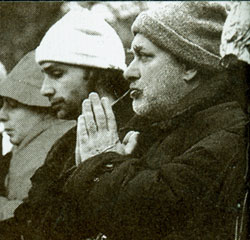
And the healing? The healing comes naturally out of the first two tenets. Maybe “healing” is not the best word. I took it from the Hebrew tikkhun olam, which literally translates as “a healing of the world.” Tikkhun olam is bringing the disparate fragments of life back into oneness, becoming whole. This can only happen through what we call “loving actions”; loving actions, then, become the third tenet.
Do you have any doubts about the extent to which you play with the forms of practice? You know, there are ten paramitas, or virtues, one of which is upaya, or expedient means. A teacher has to look at what upayas help bring folks the realization of nonduality. Besides, otherwise it’s boring, isn’t it? [laughs] I mean, how many years can you go on and not play with the forms if you’re a teacher?
Do you think that anything is lost with these newer upayas? After all, zazen has worked for centuries. No, because I haven’t thrown away many upayas. But no matter what upaya we introduce—let’s take sitting meditation, which I continue to practice—there are many for whom it has become just another form of conditioning. Their sitting meditation is not what I would call nondualistic; it becomes dualistic, and I don’t see that as having any higher value than anything else. The question for me is which upayas bring about the awareness, the realization, and then the actualization of life’s oneness.
When somebody first comes to practice, would you start with the traditional tools of Zen practice, or would you no longer do that? I have a hard time with the word “traditional.” It implies some reference point, but very few people who use that word are referring to Shakyamuni Buddha. Often they are going only as far back as their own teachers. So when people come to me I try and help them study in a way that’s most appropriate to them and their situation; if it’s zazen that makes the most sense, good; if it’s taking a plunge, also good. But with me, forms of practice will always be subject to change, because change is all there is.
You say that we get used to some practices and they lose their efficacy. I suppose after a while you can get used to being the clown, you can get very comfortable, so perhaps we can expect yet another change, another trick in the offing? Another unfolding. Yeah, that’s what I hope for; I never know what I’m going to do or say. I hope to be surprised by the unfolding. That’s what keeps it interesting for me.
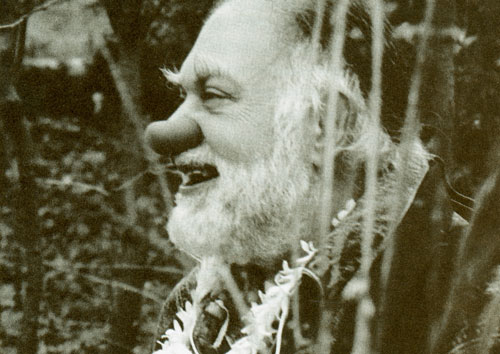
Most of us cannot push ourselves beyond what we’ve become comfortable with; we feel a teacher is necessary. Of course, there are serendipitous circumstances that may teach us something, but usually, someone’s got to push us there. What pushes you there? I don’t know. There are different ways of talking about things. Within Buddhism I would end up saying that I’m a servant of the Buddha-dharma. And that I have ultimate faith in it and that I know that the right things will come up. There’s another language that I would use, the language of the Zen Peacemaker Order: the things that I’m doing are somehow trying to bring into better consciousness, awareness, and actualization, the one body of life. There’s also a whole theory of memes, and I just see myself as a puppet of the meme of one body. Rinzai has a koan saying that we are all puppets. Who is pulling the strings? So I just answered it by saying that in the Buddhist terminology it’s the Buddha-dharma, and in more scientific language, it’s the meme of one body. Others would use another language: God, they’d say, or maybe Allah. If we come down to what’s meant, we’re all talking about the same thing.
Do you think that at the core of every tradition you’re hitting on the same thing? I do. People from every tradition have experienced the oneness of life. We see it clearly with the mystics, who are touching on the same truths.
You’re very involved with interfaith work. What’s your goal here? Take the example of my own body—the fingers of my hand, say. If I can’t make my fingers work together, they’re useless to me. If they work together, it’s so easy to pick up this cup and drink the coffee. If they’re all competing and fighting, I may never get to the cup. So think of the traditions as different fingers serving the same body. When I first started to do the work at Greyston, I was advised by so many people not to include the government in our efforts. A lot of people said to leave out the churches, they’re no good; leave out the wealthy people. But I formed a board by bringing everybody in. My idea is to create a mandala that includes everybody, to learn how to transform enemies into allies. Consider again how dysfunctional our own bodies become if each part is at odds with the other. Anyway, what we’re talking about is really big; we’ve got a big agenda, and that’s life, it’s the Ganze—the whole thing. The infinite circle!
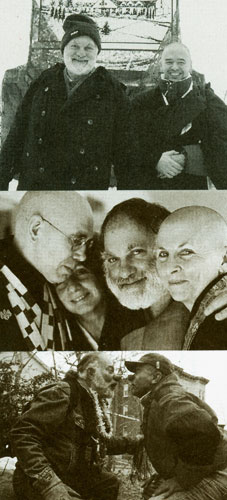
And when people say that the business of Buddhism is enlightenment… But what is enlightenment? For me the enlightened state is the realization of the oneness of life. And the proof is in the pudding: Are you functioning that way? Are you helping others?
In other words, a recognition of the oneness of life would quite naturally lead people to work for the benefit of others? I think so. I read something in a shingon handbook that says exactly that—that the depth of a person’s realization can be seen by their service to people. To humankind. Or to the planet. It’s an endless process. To me, the extent to which you understand the oneness of life is the extent to which you are enlightened.
You mention on your website that one of the goals of Peacemaker work is to become “who you really are.” Is that the recognition of the oneness of life, understanding that there’s no separation? Exactly. Yeah. When the different wonderful teachers from various traditions have used “Who am I?” as the basic koan, they’re moving us deeper and deeper into the realization of this oneness of life. We could backtrack a little. Imagine I had a disease in which I thought these hands of mine weren’t part of me. Going in the other direction, the disease is actually that I think that you’re not part of me. But everyone has some understanding of the oneness of life. It may be their own body; it may be their family; it may be their club, their society.
There are many who are averse to social action. If everything is enlightened as it is, they may ask, what’s the point? That’s rather simplistic. I can’t imagine too many people saying, “Okay, yeah, I have this one body, it’s enlightened as it is, and so therefore I don’t have to give it food, I don’t have to wash it, I don’t have to clothe it, it’s what it is. If it gets diseased, it’s fine. Just let it be diseased.”
I don’t even know exactly what “social action” means. When you look at the bigger picture, it’s just taking care of the things that need to be taken care of. Taking care of the aspects of oneself that need to be taken care of. Maybe what people call social action is taking care of the other. But, in fact, we don’t have an “other.”
And yet, you see someone who is hungry. He feels that hunger, but I don’t. And if I don’t feel it, is that a function of ignorance? Ignorance in the sense of seeing separation. Consider a koan: If you feed the cattle in China, the cows in Maine get filled. What does that mean? How deeply does one realize the oneness of life? When Mother Theresa said that she was just taking care of Christ when she tended to the needs of others, she recognized this oneness. It’s not social action. It’s common sense.
Can you talk about this in terms of the Zen Peacemaker Order tenets? How, for example, does not knowing lead one to bear witness to the oneness of life and then take action? Again, if you look at your own body, you won’t find yourself saying, “These hands are part of me.” Whatever concept you have is one of separation, but with your own body, you recognize no separation. In the state of not knowing you will automatically take care of the things that arise; there is no separation.
What if somebody says, “Well, the world’s going to hell in a handbasket, the environment’s in real trouble, we’ve reached a point of no return, we’re going to lose this battle.” Say someone sincerely believes that. What do you say? If I look at my body—say I’m terribly ill, I have cancer, and I consider everything that’s going wrong with every cell in my body—I could say, “Well, Christ, it’s hopeless, I’m going to die.” Yeah, it’s true, but my only choice is to do the best I can to better the situation as much as possible. It’s the natural response; it’s our own body. And if we really grok ourselves as the whole universe, how do you pollute yourself? You wouldn’t. You’d start looking at it. You’d start taking care of it. And it’s back to the faith that out of that realization of oneness you’re going to do the best you can, with no expectation of a cure.
In other words, there’s nothing else to do? Yeah, that’s my sense. I have no hopes of a better world; I don’t know what that means. I mean, the world is what the world is, and I will work in the best way I can to do the healing I can, to take loving actions.
Where do you see Buddhism in this country headed? I’m excited about seeing where it’s headed, watching it unfold. Our country is diverse, and Western teachers have practiced Buddhism in different cultures. My main practice is Zen, but I have been influenced by Tibetan practice, and I’m very much intrigued by Vipassana. If I look at my life I see that my teaching utilizes all different kinds of practice. And in the West we’re influenced by Sufism, by Judaism, by so many things. So that’s something new.
I took a class in Buddhism at UCLA a long time ago in which a woman talked about Buddhism as the religion of assimilation. And so we’re in that period of assimilation, and what will arise out of it is not clear. I think what will happen is that the groups that are strongly aligned with an Asian tradition will little by little become smaller and smaller. And the groups that will come out of this new Western religion will become the larger and stronger groups. The excitement will be to see what upayas and forms will arise out of that.
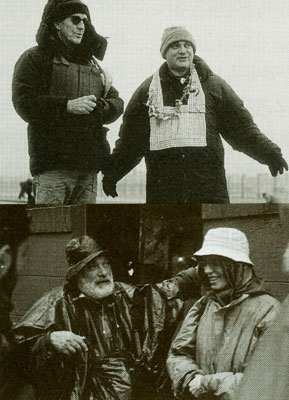
A lot of people seem to sample the different traditions cafeteria-style. Others would follow one tradition strictly. There’s a vast marketplace out there, and it’s easy to get lost. Any advice? To follow your heart. You’re at a banquet, with all these foods, and you say, “Well, how am I going to select? I would rather go to a place where they’re going to serve me, say Chinese, so I know what I’m going to get.”
That’s one way, and if it feels right for you, great, that’s what you should do. But if you’re at a banquet, you may taste a number of things. Yasutani Roshi, who was one of my teachers, said, “If you go to Tokyo, you’ll find noodle shops. Maybe hundreds of noodle shops, all with specialty noodles. But if you come to my shop, I’ll serve you the noodles that you want.”
Both ways work. And you can get lost in both—stuck in one or confused among many. Personally, I’m not afraid of the banquet. I’ve taken a hand in Sufism, in Vedantism, and I’m at home in Judaism; I love the practice in Trappist monasteries; they’ve all broadened my training in Zen, my root training.
Whatever’s available that works? That’s my sense.
And what of the proliferation of dharma teachers? So many are concerned with “authenticity.” There is much concern about whether a teacher is qualified, whether the teachings are “true dharma.” Dogen says you can’t stain the dharma, and I have faith in that. Some teachers will not be so good and they’ll fade. Some will be amazing teachers, like Shakyamuni, and they’ll endure. It’ll take care of itself. I’ve become much more liberal on this whole notion. It will all self-regulate.
What does it mean when people say they are “protecting the dharma?” It’s so subjective, huh? If Dogen says you can’t stain the dharma, what does that mean, to protect it? Most times when I hear that phrase I think people are really meaning, “I have to protect my image of the dharma.”
You disrobed to teach as a layman. Why? There’s a role for monastics and there’s a role for the laity. Monastics and laypeople have different forms of practice, and each is valid. Since I’m looking at all of life, I see all of the various forms as having their purpose. What I don’t subscribe to is the idea that only monastics can become enlightened. Personally, I’m interested in working with upayas that deal with nonmonastics, and it’s where I think I’m most effective. I could have continued to work within the confines of the tradition of my teacher, Maezumi Roshi, but I wanted to deal with everybody. Not just with people who were monastics, not just with people who would come to a zendo, but everybody.
In your book Bearing Witness you mention you started out a loner. And now you’re known by many, and rarely are you alone. I’m bringing everyone in, making sure we include those we are most likely to overlook. Funny, right? First a loner, and now I’m throwing the biggest party!
So what happened? I’m calling my new book Infinite Circle because it’s my role in life to broaden the circle, to extend the space we play in. Whatever our realization, however deep we go, we end up boxing ourselves in again. We start to decorate that box, to make it nicer or more comfortable. And then we can brag to all our friends, “Look at my great life.” And so I like to keep knocking down the walls of those boxes, all the while knowing that I’m just making a bigger box. The goal is an infinite circle in which everything is included. And that’s a job for countless lifetimes, so I’m in no rush. [laughs]
Clown Koan
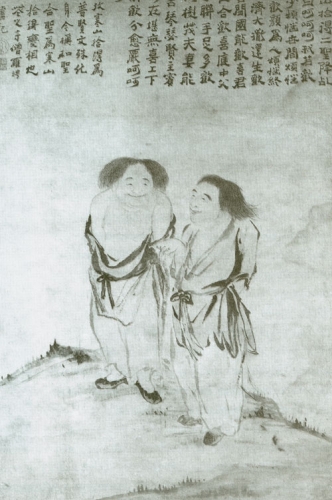
Zen masters are legendary for their eccentricities, so perhaps it’s not so surprising that Bernie Glassman has taken to clowning. He came to the practice through Wavy Gravy, the Beat trickster whom Ram Dass has called a “genuine mahatma of the cosmic giggle.”
“I told Gravy I was interested in clowning,” explains Glassman, “so last year he introduced me to my mentor, Mr. YooWho.” Mr. YooWho, a.k.a. Moshe Cohen, is the American coordinator of the Barcelona-based group Clowns Without Borders, which performs for children in refugee camps in Gaza and Nepal, in Chiapas and Kosovo. “YooWho tells his students to find their clown persona deep inside,” says Glassman, “so I went deep inside and found my persona. I call it Bernie the Boobysattva.”
The practice of clowning is one of the reasons Glassman disrobed, he explains. “The clown has many roles, but certainly one of them is to make fun and point out the arrogance and stiffness of institutions, of the high and mighty, of the king, the courtiers-and the priests. To restore some perspective to our eyes, often so bedazzled by kings, gurus, and even roshis.”
Donning his new nose, in 1999 Glassman founded The Order of Dis-Order (OD, pronounced odd) with Mr. YooWho, twenty years his junior. OD’s members have dubbed themselves the “Odd Peacemakers.” Their purpose? “Odding,” explains Glassman (for the uninitiated, that means behaving oddly). “We have OD actions. We also have some basic OD rules. One of them is Not Being Here Now.”
On OD’s web page, the group’s mission statement is clear enough: “Our mission is to work in the cracks of our community and focus on humor and lightness … .” But you’re likely to be stumped here and there. Consider the blurred “Vision Statement”:
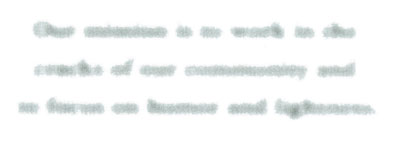
Although he has given up his monk’s robes, Glassman has not dispensed with all the accoutrements of Zen practice. For instance, the Zen teacher’s staff, used for special occasions such as ordinations or senior installations, has simply taken a new form, thanks to his friend Dylan Hixon, creator of special effects for movies:
“I asked Dylan to make me a staff. It should have a plunger at one end, I told him, because I loved to do plunges, and on the other end it should have a horn just like the one Harpo Marx used to have. That way I could honk the horn whenever somebody was pretentious or a meeting turned too grave or we were just being too self-important. I’ve had my fill of reverence and selfconsciousness. Clowns don’t inspire much reverence. They’re laughed with, sometimes even laughed at.”
Hixon made the staff according to specifications, and added a feature of his own: the staff unscrews and rolls out, becoming a walking stick with a plunger at the end. “It doesn’t do much to stabilize me,” says Glassman, “which I don’t regret. Dylan made it black, but I’m thinking of having it painted yellow with lots of polka dots.” Now, whenever he travels, Glassman makes sure to pack his nose, bubbles, and clown staff.
Bernie Glassman is currently working on an Order of Minstrels, or OM. Kirtan chant master Krishna Das was the first to sign on; singer Bonnie Raitt recently said she’d like to join. And Gabi Meyer, a musical ecstatic working with Jews and Arabs living in Israel, is a member of OM. “At all our major events we want to have clowns and minstrels,” Glassman says.
Also in the works is an online “Mensch Watch,” which will chronicle the works of extraordinary peacemakers around the world. They will gather in what Glassman calls “Mensch Mixers” to exchange ideas, methods, and, well, maybe a few jokes.